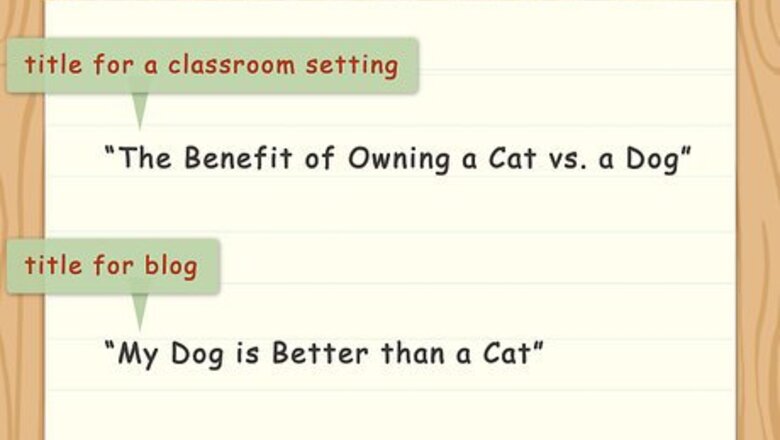
views
Creating an Informative Title
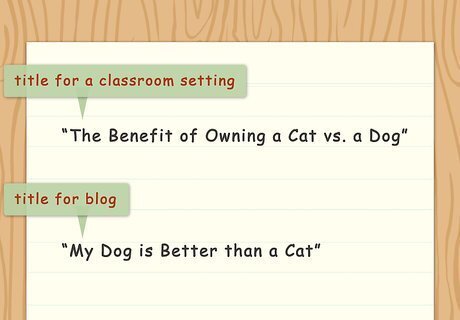
Establish your audience. Before you pick your essay title, you need to know your audience. Are you writing this for just your teacher, for your teacher and your peers, for your boss, your coworkers, for blog or magazine readers? Identifying your audience will help you pick the type of title that is right for your essay. Informative titles like “The Benefit of Owning a Cat vs. a Dog”, for example, would be better for a classroom setting, while a creative title like “My Dog is Better than a Cat” would be better for a blog.
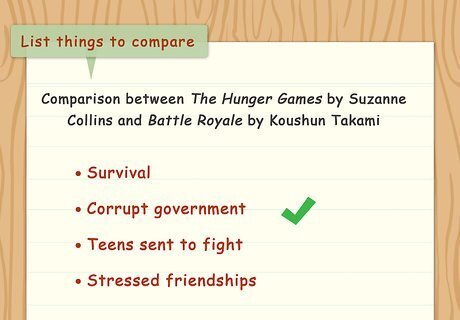
List what you want to compare. An informative title should tell your reader exactly what you are comparing in your essay. List the subjects you want to compare so that you can make sure they are included in your title. You only need to include the broad topics or themes you want to compare, such as dogs and cats. Don’t worry about putting individual points in your title. Those points will be addressed in the body of your essay. You may be comparing something to itself over time or space, like rock music in the 20th and 21st centuries, or Renaissance art in Italy and the Netherlands. If that’s the case, list the subject you want to compare, and places or timeframes that you are using for your comparison.
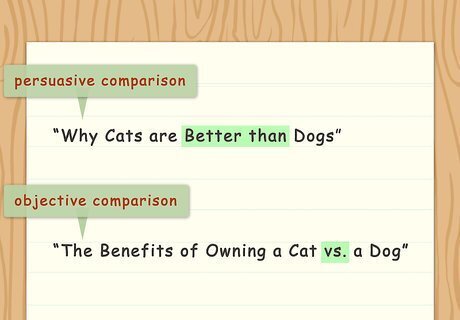
Decide if your essay is meant to be persuasive or not. Some compare and contrast essays are meant to persuade readers toward a certain opinion, such as “Why Cats are Better than Dogs”. Other essays aim for a more objective comparison of content or facts, like “The Benefits of Owning a Cat vs. a Dog”. Consider whether the goal of your essay is just to compare, or to persuade through comparison. Persuasive essay titles might use words like “benefit,” “better,” “advantages,” “should,” “will,” and other words that convey a sense that one subject has an advantage over the other. Informative titles might use words like “versus,” “compared,” or “difference”. These words don’t suggest that one subject is better or worse, they simply point out they are not the same.
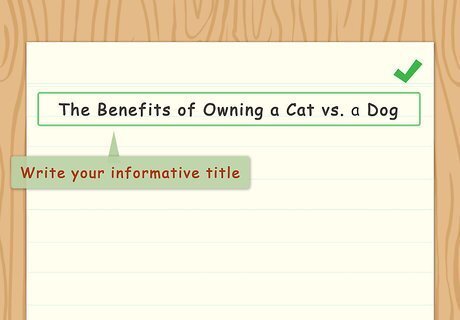
Write your informative title. Once you know what you want to compare, how you want to compare them, and if an informative title is right for your essay, it’s time to put it all together. Use your persuasive or informative words to link your subjects together. The end result should be a title that lets readers know what you want to compare and contrast, and how you plan on doing so in just a few words. If for example, you're comparing rock music across time, your title might be The Difference in Chord Progressions of 20th and 21st-century Rock Music.
Generating a Creative Title
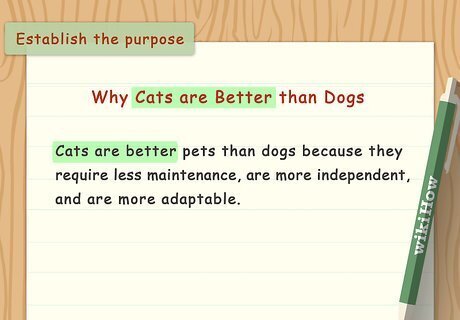
Establish your purpose. If you are writing a creative title, the point is to catch your audience’s interest. Think about who your audience is and what you hope to accomplish by writing to them. Are you providing them with more facts? Are you reinforcing a popular idea? Are you contradicting a popular idea? Your purpose will help you know which words are the best fit for your title. If, for example, you just want to compare white and milk chocolate, you are providing facts. Your goal will not be to make your audience think one particular chocolate is better. Your title, then, may be something like "Loco for Cocoa: The Differences Between Types of Chocolate." If, however, you want to tell your audience why milk chocolate is better, you are reinforcing a popular idea. If you want to explain why white chocolate is better, you are going against a popular idea. In that case, a better title might be "Milking it - Why White Chocolate is Totally the Best Chocolate."
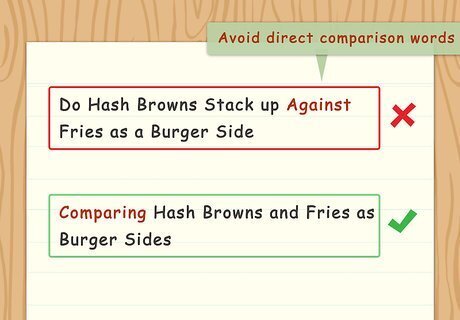
Avoid direct comparison words. If you want to write a creative title, try to avoid words or phrases that make a direct comparison. Words like “versus” and phrases like “compared to” are informative, but they are not very engaging. Instead, set up an action between your subjects. ”Do Hash Browns Stack up Against Fries as a Burger Side” creates a sense of tension between your subjects and challenges a popular opinion. It is a more engaging title for your readers than “Comparing Hash Browns and Fries as Burger Sides.”

Use a colon. Titles with alliteration, puns, or plays on words are fun but they don’t always tell your audience enough about your essay subject. Use a colon to connect your creative title with an informative descriptor. For example, if you want to write an essay comparing two works of art by Van Gogh, you may use a title like, “Look at Him Gogh: Comparing Floral Composition in Almond Blossoms and Poppy Flowers.”
Keeping Your Title Relevant and Readable
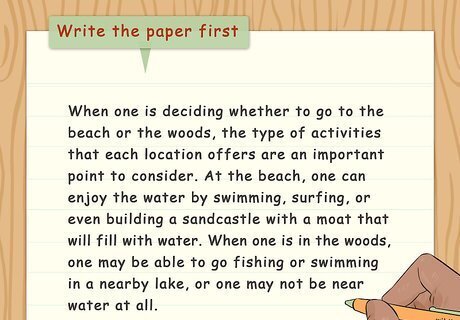
Write the paper first. Regardless of whether your essay is formal or informal and whether or not it is persuasive, you should always write the essay before the title. Pieces change and take new shape during the writing process. You will know best what you want to communicate in your title once you have already written the essay.
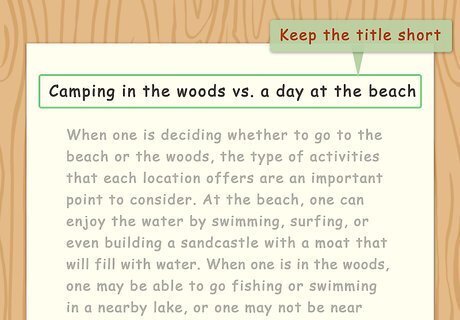
Keep the title short. Some titles, especially ones that use a colon to link creative and informative ideas, may be about as long as a sentence. A title shouldn’t be longer than that, and should not be broken into multiple sentences. Keep the title as short as possible while still creating a hook and conveying your ideas. Your essay is where you will make your arguments. Your title just needs to convey your subjects and establish that you plan to compare and contrast them in some way.

Ask a friend for their opinion. If you are unsure about your title, ask a friend or family member to read the title. Don’t let them read the rest of the essay, though. When they are done, ask them, “What do you think this paper will be about?” Their answer will let you know if you need to be more specific with your title.


















Comments
0 comment